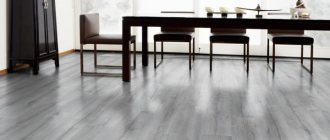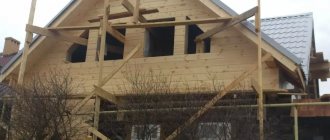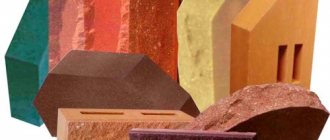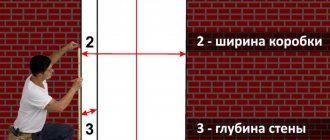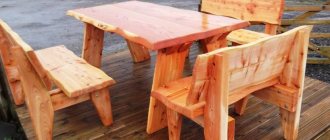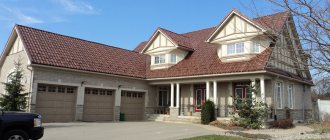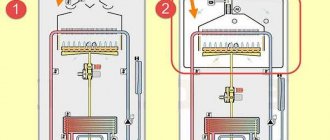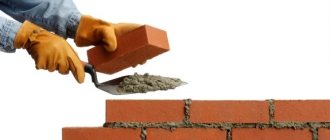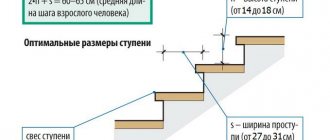Metal tiles are a modern roofing material consisting of sheets of aluminum, copper or, most often, galvanized steel made by cold stamping, imitating the texture of ceramic tiles.
To protect against the harmful effects of atmospheric phenomena, the sheets are covered with a layer of polymer materials .
Sales of metal tiles are growing every year, and they are increasingly used in both municipal and individual construction projects.
Let's try to understand the reasons for this popularity, the varieties and features of the use of this material. In this article you will learn the size of a metal roofing sheet and other technical characteristics.
Metal tiles: sheet sizes and technical characteristics
When talking about the geometric dimensions of a sheet, they mean three parameters: width, length and thickness . Now let’s look at GOST metal tiles.
So, the dimensions of metal roofing tiles are:
- Width - 116-119 cm , working width of metal tiles is about 110 cm;
- The length of the metal tile sheet is from 50 to 900 cm;
- The thickness of metal tiles varies depending on the type from 0.4 to 0.6 cm.
The width of metal tiles for roofs of any type, brand and length, as a rule, ranges from 116 to 119 cm. This is very simple to explain - the manufacturer ties the width of the metal tile sheet to the width of the raw material, which, in this case, is the metal sheet.
Metal tile sheets are formed at rolling mills of metallurgical enterprises, where standardized equipment with standard roll sizes is used.
Much greater variety can be found by looking at the list of possible lengths . Rolled metal supplied to factories for the production of metal tiles can be up to 9 meters long - this reduces loading and transportation costs. Of course, installing a roof made of sheets of this size would be extremely difficult.
Therefore, the sheets that go on sale are much shorter. The length of the metal tile is set by the manufacturer and can be arbitrary , but most often one of the standard sheet sizes is used (all sizes are plus or minus 3 cm):
- ultra-small – 50 cm;
- small – 120 cm;
- medium – 225 cm;
- large – 360 cm;
- very large – 450 cm.
Many companies also provide services for cutting sheets to length according to customer needs. One of the most popular types of metal tiles today is Monterrey.
Metal profile: dimensions of metal tiles
The thickness of a metal tile is usually understood as the thickness of its metal layer . If the previous two indicators characterized exclusively the ease of installation , then the thickness of the metal roofing tile is also an operational parameter .
IMPORTANT!
It should be remembered that the geometric dimensions of metal tiles differ from the operational ones by the amount of overlap of adjacent sheets. It is important to take this into account when calculating the required amount of material and the total roof area. How to choose a metal roofing covering, read here.
It must provide an optimal balance between the reliability of the structure and its weight. This condition corresponds to a sheet thickness of 0.5 mm , which is also the most common. Metal tiles of smaller thicknesses are used in small auxiliary structures, large ones - in the case of a roof of a sparse frame of a large area and under the condition of high strength of load-bearing walls.
Video
| Manufacturer | Total length, mm | Length overlap, mm | Useful length, mm | Full width, mm | Overlap width, mm | Usable width, mm |
| Metalprofile | 3650; 2250; 1200; 500 | 150 | 3500; 2100; 1050; 350 | 1190 | 90 | 1100 |
| Grand Line | 3630; 2230; 1180; 480 | 130 | 3500; 2100; 1050; 350 | 1180 | 80 | 1100 |
| Stynergy | 3630; 2230; 1180; 480 | 130 | 3500; 2100; 1050; 350 | 1180 | 80 | 1100 |
| Finish Profiles | 3600; 2200; 1150; 450 | 100 | 3500; 2100; 1050; 350 | 1185 | 85 | 1100 |
| Poimukate | 3630; 2230; 1180; 480 | 130 | 3500; 2100; 1050; 350 | 1180 | 80 | 1100 |
| Interprofile | 3620; 2220; 1170; 470 | 120 | 3500; 2100; 1050; 350 | 1160 | 60 | 1110 |
| Mera System Anna | 3620; 2220; 1170; 470 | 120 | 3500; 2100; 1050; 350 | 1140 | 90 | 1050 |
| Mera System Eva | 3620; 2220; 1170; 490 | 120 | 3500; 2100; 1050; 300 | 1160 | 80 | 1080 |
| Pelti and Rauta | 3630; 2230; 1180; 480 | 130 | 3500; 2100; 1050; 350 | 1180 | 80 | 1100 |
| Weckman | 3630; 2230; 1180; 480 | 130 | 3500; 2100; 1050; 350 | 1190 | 90 | 1100 |
| Ruukki® Adamante | 3650; 2250; 850 | 150 | 3500; 2100; 700 | 1153 | 28 | 1125 |
| Ruukki® Finnera | 705 | 45 | 660 | 1190 | 5 | 1140 |
Wave height of metal tiles and sheet profile
The wave of a metal tile is a vertical line consisting of conventional cells, and the dimensions of the wave are the distances between the centers of adjacent cells of two waves (step) and the distance from the bottom to the top point of one cell (height).
Most manufacturers use one of two standard wave pitches - 185 mm or 350 mm.
The wave size of metal tiles is within:
- from 20 to 30 mm – small standard height;
- from 30 to 50 mm – average standard height;
- from 50 to 70 mm – high height (usually only for expensive varieties).
A sheet profile is understood as a characteristic pattern formed by wave cells, a certain unique pattern. The profile is developed by the manufacturer's design department and can be absolutely anything. The only requirement for the profile of a metal tile covering is compliance with your aesthetic views.
Colors available to the consumer
The available colors depend on the specific manufacturer and, as a rule, the choice ranges from 5-10 options to 50 different colors and shades. To ensure that the manager understands you correctly, remember the code of the desired color from the RAL table.
Popular options according to RAL scale
At the end of the article there are photos of what the material looks like directly on the roof.
Advantages and disadvantages
The main advantages of metal tiles include:
- relatively low cost ;
- long service life ;
- low specific gravity ;
- resistance to atmospheric agents;
- attractive appearance ;
- fire safety .
The low cost of roofing is most clearly evident in comparison with its main historical competitor - ceramic tiles. Mechanization of production, the possibility of simultaneous operation of a large number of production lines and the availability of materials and technologies used make metal tiles a low-cost material to manufacture.
And taking into account the reliability of the finished product, strength and resistance to impacts, it is obvious that in the ratio of cost to service life, metal tiles leave all other roofing materials far behind.
- Life time . This important indicator can vary significantly depending on the materials used (the quality of both metal and polymers is important), on the thickness and profile of the sheet, as well as on external factors. Most manufacturers indicate comfortable operation for 10-25 years , but high-quality metal tiles from leading brands can perform their functions for more than half a century.
- Specific gravity . Specific gravity refers to the ratio of the mass of a sheet of roofing material to its area. The average weight of 1 m2 for metal tiles is about 6 kg/m2 . Such a low value indicates the ease of installation of the material and the almost complete absence of additional loads on the load-bearing structures of the roof and foundation.
- Wear resistance . Resistance to atmospheric agents manifests itself differently in different brands of metal tiles. The primary factor here is the quality of the polymer coating, which is responsible for protecting the metal layer from corrosion and mechanical damage. High-quality polymers are resistant to aggressive environments, ultraviolet radiation, and shock loads (for example, hail). They do not lose their shape and appearance even in the most extreme climatic zones.
But it is the appearance that is often a stumbling block for people who are thinking about purchasing roofing materials, but do not have the proper experience in this. They expect some kind of surrogate ceramic tile roof, not realizing that it has long faded into the background not only in quality, but also in design.
Modern metal tiles are manufactured symmetrically and accurately, and the perfection of technological processes allows them to imitate any shape. So metal tiles are suitable even for projects with a clearly defined retro style.
In the case of fire safety, everything is more than obvious. None of the components of the metal tile is capable of burning , smoldering, or in any way contributing to the occurrence or spread of a flame.
Advantages of coverage
However, the obvious disadvantages of metal tiles . These include:
- excessive consumption of material during installation;
- rapid wear if the top layer is damaged ;
- relatively low sound insulation ;
- danger of snow melting .
NOTE!
The overconsumption of material is explained by the fact that the size of metal roof tiles has fixed values , which is why the occurrence of excess metal tile scraps is inevitable. This overspending is especially noticeable when covering roofs of complex shapes with many angles and bends.
It would be unfair not to notice that the same drawback is characteristic of almost all roofing materials , with the exception, perhaps, of ceramic tiles.
- The most common type of damage to the top layer (polymer) is chips, cracks and peeling as a result of mechanical damage, for example, during transportation, cutting the sheet or fixing it to a frame. In places where the polymer layer is damaged, as a rule, corrosion quickly occurs , which is fraught with the loss of not only aesthetic properties, but also the tightness of the roof.
- The sound insulation properties of the coating are a controversial issue. Noise insulation will indeed be extremely low if the sheets are mounted directly to the frame. Then every drop of rain, not to mention hail, will resound under the roof. However, when using a sound-insulating substrate and following metal tile installation technologies, the sound insulation of the structure will be in no way inferior to any other type of roofing.
Due to the specific shape of the leaf surface, snow layers may melt, which can be dangerous to the life and health of others. Solving this problem is very simple - just use snow-retaining accessories.
What types of metal tiles are there? Available types of roofing materials
Profile types
All metal tiles available on the market differ in the type of profile, which gives the roof a unique pattern. The following options are in high demand on the Russian construction market:
"Monterrey"
This is a rigid profile that accurately imitates ceramic tiles. Profiles of this type are characterized by a length of 1,100 mm , 6 waves with a pitch of 350 millimeters . The height of the profiling can increase or decrease, affecting the rigidity of the structure. The use of such metal tiles gives the building a classic look of modern architecture.
"Cascade"
It is characterized by strict geometry and rectangular shapes. If you order metal tiles of this profile in brown, the roof will resemble a chocolate bar. The width of such sheets is 1,120 millimeters , the structure is 5 waves of 224 mm , the height of the steps is 22.5 mm . The advantages of the profile are the minimum number of joints, which ensures material savings. Thanks to its strict shapes, the profile is suitable for residential and commercial development.
"Joker"
The profile of the metal tile is reminiscent of the popular “Monterrey”, with a more “lush” geometry. With standard sheet sizes, the wave height is 49 mm ; accordingly, in low-rise construction conditions, a roof made from such a profile will look more attractive.
"Athena"
Quite an original profile, where a wave-like structure alternates with a flat base. Such metal tiles fit organically into any architectural style, therefore they are often used for the reconstruction of buildings.
In addition to the usual types of metal tiles, new models with original designs are appearing on the market. For example: “Bongo”, “Andalusia”, “Shanghai”. The sheets attract attention with a relief pattern (wave height up to 66 mm ) and Z-shaped locking connections, which ensures installation without the use of external fasteners.
Types of metal profiles from Finnish colleagues
Metal tile sheet base materials
The types of metal tiles on the market usually differ in the type of profile. However, this is not the only distinguishing feature. A different base is used for manufacturing, which largely determines the characteristics of the roof. For example:
- Steel . This is the most common type of metal tile on the domestic market. The base material is usually coated with a layer of zinc to improve the roof's durability and corrosion resistance.
- Aluminum . This profile is less common, but has a number of undeniable advantages. In particular, aluminum is neutral to any external influences and therefore does not require additional processing. In addition, the material is quite light, which reduces the load on the foundation and supporting structures; installation does not require durable sheathing. The disadvantages of aluminum metal tiles include a very meager palette of colors and high cost.
- Copper . This is an initially expensive material that is rarely used in private construction. Copper metal tiles look impressive and pretentious, especially when covered with a greenish coating. The material does not require additional protection against corrosion, however, it is mainly used for the reconstruction of architectural and antique monuments.
It is worth noting that the most common and practical is galvanized steel metal tiles, which we will consider in the future.
Additional elements
Additional elements are roofing parts that do not fulfill the purpose of the roofing material, but are necessary for fixing it, making joints and turns, installing additional structures, ensuring tightness, and draining excess precipitation. The main types of additional elements are:
- ridge (ridge strip) - a profile in the shape of a corner, cornice, semicircle or complex shape, installed at the junction of sheets of metal tiles on the upper ridge;
- end strip - a profile in the shape of a corner or a complex shape that covers the front and rear ribs of the roof;
- strips of external and internal corners - profiles in the shape of a corner or a complex shape, designed for turning metal tiles at the appropriate angle;
- valley strip - a complex-shaped profile that provides the lower joint of the roof wings, as well as the removal of excess precipitation from this joint;
- ebb - a profile in the shape of a wide channel or semicircle, located at the edge of the roof slope and performing the function of draining rainwater;
- snow retainer bar - a triangular profile that prevents snow layers from sliding;
- plugs are shaped sheet metal products that provide sealing of joints between straight surfaces and complex-shaped surfaces.
Additional elements
In addition, some sources indicate stairs, hatches, cornices, caps, chimneys, even insulation and self-tapping screws as additional elements. Of course, all this is necessary when installing the roof, but how to classify these items is a controversial issue.
This coating is the material of the future, superior to most competitors in economic, ergonomic and performance indicators . We hope our article was useful for studying the basic parameters of metal tiles, their properties and types.
What data is taken into account when calculating the material?
Metal tiles are a roofing material that in appearance resembles standard fine clay tiles, but is made of steel. Thanks to special equipment for the production of metal tiles, the steel takes the required shape and size.
Since both large and small companies are currently engaged in the production of roofing materials, the characteristics and sizes of metal tiles may differ slightly, so you need to be prepared for the fact that products of different brands may not fit together. Of course, all products are manufactured according to the parameters specified in the technical standards. However, large industrial enterprises can provide greater accuracy of production, while small firms often use cheaper used equipment, which does not always allow for accurate measurements.
Thus, the difference in the sizes of roofing tiles requires a detailed study of the following material characteristics before purchasing:
- width and length of canvases;
- useful length and width values;
- wave heights;
- distances between profiles.
Egor, review on stroystm.ru
Egor has been using metal tiles for 12 years, claiming that the material has retained all its performance characteristics. He hopes that for another 20 years he will not have to think about replacing metal tiles with a new coating.
Egor was lucky, according to the experts of the portal where the review was left, because he involved professional craftsmen in the work, who performed the installation correctly, observing all technologies and rules. Minimal mistakes made when covering a roof with metal tiles lead to leaks, deformation of the material, and one scratch left by accident causes terrible corrosion to grow.
Full text of the review: stroystm.ru/otzyvy-o-krovle/otzivi/otzyvy-o-kryshe-iz-metallocherepitsy
overlap
To prevent leaks from rain or snow, sheets of metal tiles are laid on the roof, not edge-to-edge, but overlapping. If you subtract the overlap, you can determine the usable area of the sheet on a metal base. The total overlap in the longitudinal direction is usually from 10 to 15 centimeters; in width it reduces the width of the sheet to 110 centimeters.
The overlap of sheets directly affects the useful (working) area of sheets of roofing material Source spb-artstroy.ru
Prices
The cost of metal tiles depends on the thickness of the sheet, coating, type of profile, and manufacturer. It also differs by region. The cheapest material is offered by Russian manufacturers (RUB per 1 m2):
- Grand Line. Quinta - from 370 rubles, Modern - from 275 rubles, Classic - from 350 rubles;
- Metal profile. Monterrey - from 303 rubles, Supermonterrey - from 260 rubles, Cameo - from 380 rubles.
- Finnish company Ruukki. Adamate - from 770 rubles, Decorray - from 820 rubles, Finnera - from 760 rubles, Monterrey Eco - from 680 rubles, Elite - from 1260 rubles.
Economy class metal tiles in the Russian Federation can be purchased at a price in the range of 250–575 rubles/sq.m.
What protects the profile sheet from corrosion
The steel sheet is protected from rust on the outside by several layers of protection. The sequence of their application:
- Zinc.
- Passivating composition.
- Priming.
- Polymer coating.
The most important of them are the first and fourth. These two characteristics - the density of galvanization and the type of polymer - should be paid attention to first when choosing a material. Table. Galvanization class
| Class | Zinc content, g/m2 | Layer thickness, microns |
| Elevated | 570–855 | 40–60 |
| I | 258–570 | 18–40 |
| II | 142–258 | 10–18 |
The higher the indicator, the better the material is protected from corrosion. But you need to know that manufacturers do not provide a long warranty period for galvanized sheets without polymer coating. Therefore, along with this characteristic, it is necessary to evaluate the type of polymer.
If you look at the catalog on the website https://skrovlya.kiev.ua/metallocherepitsa/, you will notice that the more expensive the metal tile, the higher the zinc content.
Overview of chimney pipes
